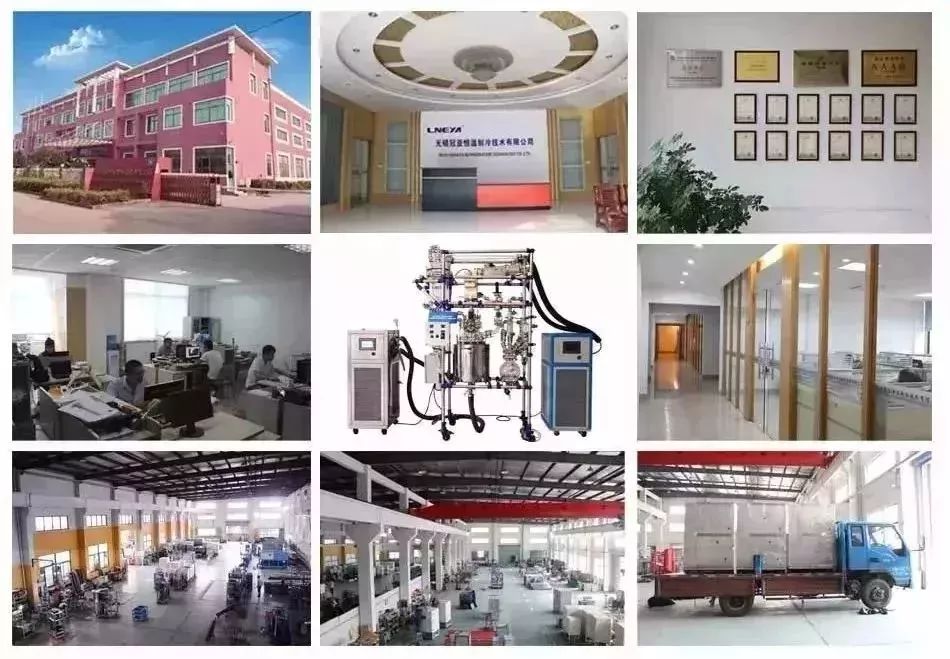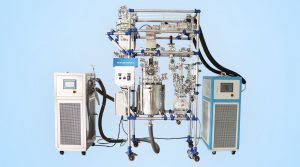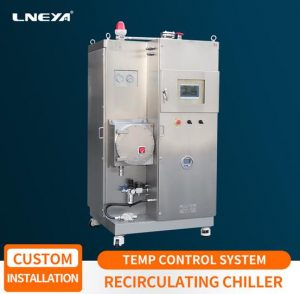The principle of LNEYA chiller
Industrial chillers are commonly used to cool products and machinery for a variety of different applications, including injection molding, tools and die cutting, food and beverage, chemicals, lasers, machine tools, semiconductors and more.
In most process cooling applications, the pumping system circulates cold water or water/glycol solution from the chiller to the process. This cooled fluid removes heat from the process and the warm fluid returns to the cooler. Process water is a means of transferring heat from the process to the cooler.
The process cooler contains a compound called a refrigerant. There are many types of refrigerants and applications depending on the temperature required, but they are all based on the fundamental principle of compression and phase change of the refrigerant from liquid to gas and back to liquid. This process of heating and cooling the refrigerant and changing it from a gas to a liquid and returning again is a refrigeration cycle.

The refrigeration cycle begins with a low pressure liquid/gas mixture entering the evaporator. In the evaporator, heat from the process water or water/glycol solution causes the refrigerant to boil and the refrigerant to change from a low pressure liquid to a low pressure gas. The low pressure gas enters the compressor where it is compressed into a high pressure gas. The high pressure gas enters the condenser, and the ambient air or condenser water removes heat and cools it into a high pressure liquid. The high pressure liquid moves to the expansion valve, controlling the amount of liquid refrigerant entering the evaporator, including restarting the refrigeration cycle.
LNEYA air-cooled cooling equipment uses ambient air to cool and condense hot refrigerant gas back into the liquid. It can be located inside the cooler or can be remotely located outside, but in the end it will block the heat from the cooler to the air. In a water-cooled condenser, water from the cooling tower cools and condenses the refrigerant.
Raccomandazioni correlate
-
What are the main uses of the reactor heating and cooling unit?
990The reactor heating and cooling device is suitable for high-purity metal, rare substance purification, laboratory environment simulation, magnetron sputtering, vacuum coating and other industries. Large cryogenic pump units can provide a cooling e...
Visualizza i dettagli -
Come risolvere il problema dell'insufficiente capacità di raffreddamento del sistema del ciclo di raffreddamento dei semiconduttori?
1270Il sistema del ciclo di raffreddamento dei semiconduttori è un dispositivo per il raffreddamento della parte di riscaldamento dei semiconduttori. LushiA ricorda che se la capacità di raffreddamento è insufficiente durante il funzionamento, è necessario controllare in tempo se qualcosa è andato storto. W...
Visualizza i dettagli -
What Will Happen to the Over-Cooling of the Low Temperature Chiller?
935As we all know, the low temperature chiller is a kind of professional refrigeration design widely used in industry. Although it can provide an effective cryogenic environment, there are some abnormal phenomena in over-refrigeration. Usually, the l...
Visualizza i dettagli -
Descrizione delle prestazioni del refrigeratore a ricircolo per bioreattore
1007Il refrigeratore a ricircolo è adatto per la reazione ad alta e bassa temperatura di vari reattori in acciaio inox, smalto, lega di titanio, emulsionatori, macchine per lo stampaggio a iniezione, recipienti di miscelazione e vari bioreattori. Altri bioreattori in diversi...
Visualizza i dettagli
 Refrigeratori industriali LNEYA Produttore Fornitore
Refrigeratori industriali LNEYA Produttore Fornitore













